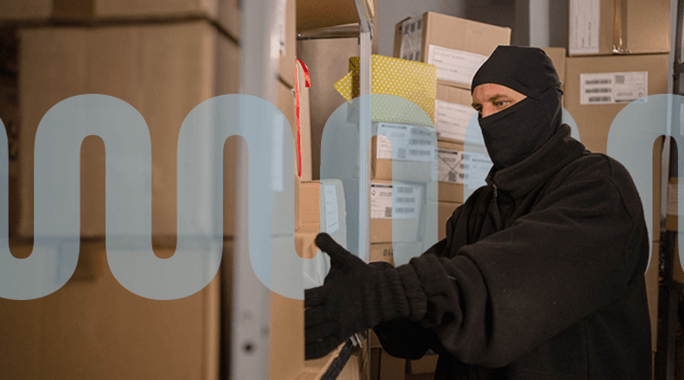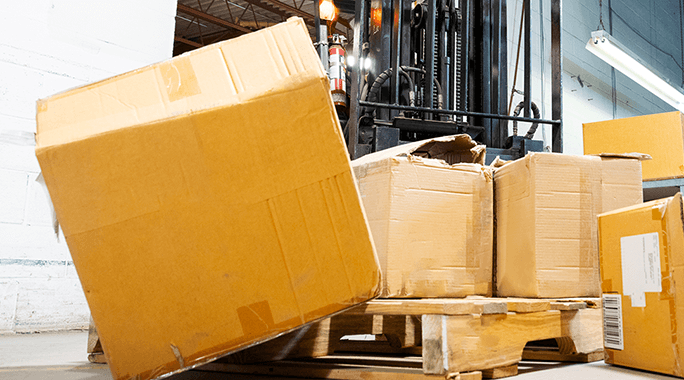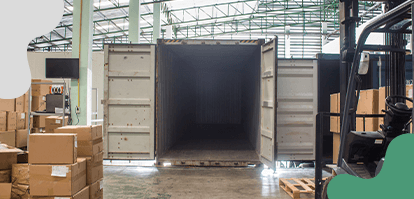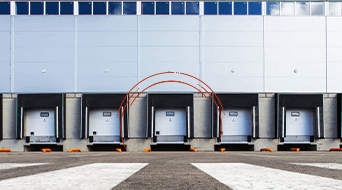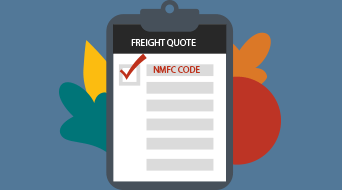Freight Shipping Guide 101: Everything You Need to Know
Understanding freight shipping can be difficult for businesses. But here is everything you need to know! Check out our Ultimate Freight Shipping Guide.
What To Expect During Your First Freight Pickup
Freight pickups are much different than parcel pickups. Learn what to expect, how to prepare and how to avoid delays!
Your Guide To Freight Class + 2025 Changes
Understand freight class and the new NMFC rules for 2025 — and how they affect your LTL shipping rates!
4 Challenges That Could Disrupt Peak Season
Learn the top freight challenges disrupting peak season and how Unishippers, a leading 3PL, can help SMB shippers adapt.
House Bill of Lading vs. Master Bill of Lading in Shipping
In LTL freight shipping, a house bill of lading contains shipment information while a master bill of lading contains delivery information. Learn about the difference.
Shipping Pallets Frequently Asked Questions
Freight shipping pallets protect your cargo, make loading and unloading efficient, and maximize space in a shipping truck. Find answers to common questions.
Freight Shipping Terms You Need To Know
Master freight terms and learn the language of LTL, TL, fees and freight types to improve shipping efficiency.
Cargo Theft Prevention Starts with the Right 3PL
Learn how a 3PL like Unishippers can create cargo theft prevention strategies to keep your freight safe!
FAQs: Answers To Questions About NMFC Changes
The NMFC freight changes are officially in place. See how a 3PL like Unishippers can help you stay compliant!
Unishippers' Guide To Comparing Freight Service Types
Use our guide to take the confusion out of selecting the best freight service type.
How a 3PL Strengthens Your Supply Chain Resilience
A resilient supply chain is crucial for SMB shippers. Learn how a 3PL can identify risks & assess opportunities for you!
Freight Class Changes 2025: What Shippers Need to Know
There will be major changes to how shippers class their LTL freight in 2025. Get a look at the changes.
4 Ways To Get Best Truckload Shipping Rates
Getting the best truckload shipping rates isn’t as easy as requesting a quote. Learn what to look for to get top rates!
Freight Packaging: Prepare Shipments With Our Help
We’ll guide you through the steps of the freight packaging process, ensuring your goods are safe and on time.
Freight Shipping Tips & Tricks for Peak Season
Peak Season is the busiest time of year for freight shippers, causing many challenges. Check out our blog for help!
Shield Your Bottom Line With ProfitProtect™ Insurance
Learn how to protect your important shipments with InsureShield™ freight insurance through UPS Capital
Freight Shipping To Canada
Ship LTL freight between the U.S. & Canada with ease. Learn about cross-border shipping, required paperwork, customs brokers & how to avoid delays.
Ask the Expert: Freight Shipping Tips for Your SMB
A top Unishippers franchise owner answers some of the biggest questions businesses have about saving money and improving their freight shipping operations.
Freight Shipping Software: A Comprehensive Guide
Check out our guide to freight shipping software and start optimizing your freight shipping for better outcomes.
Your Guide for Freight Shipping to Mexico
Are you thinking of shipping freight to Mexico? Read our cross-border freight shipping guide for a smooth shipping to Mexico experience.
6 Steps To Freight Efficiency
Freight shipping is tough for some shippers, but our guide gives you a step-by-step look at all of the steps involved.
Tips on Getting the Best Freight Shipping Rates
Getting the best freight rates isn’t always easy. Here, we provide insights to help increase efficiency and cut costs!
A Mid-2024 Freight Recession Update
As the freight recession lingers, Unishippers gives you an update to keep you informed on the issues concerning the downturn. Get the latest info here!
Upgrade Your Freight Shipping with a TMS Shipping Platform
A TMS helps you increase efficiency and save money. Learn about these platforms and how they help you excel at freight.
When To Choose Spot vs Contract Freight Rates
There are pros and cons to both spot and contract freight rates. Check out our blog to see which is right for you.
What's the difference between FTL & LTL freight?
Discover the key differences between FTL and LTL shipping, including costs, routing, freight class, accessorial charges & delivery times to optimize your strategy.
What happens when the shipping company loses your freight?
Take a few minutes to familiarize yourself with what happens if your shipment ends up missing.
Trade Show Shipping: Timely & Cost-Effective Tips
Learn trade show freight shipping essentials. Get tips on timing, cost-saving and choosing the right carrier to ensure your booth & materials arrives on time.
What does FOB mean in shipping?
Learn what FOB (Free on Board) means in shipping, how it affects costs and liability, and why it matters for your business. Get expert shipping guidance today!
Freight Recession Shipping Tips + Myths Debunked
The freight recession has had a big impact on shippers everywhere. Get the latest and protect your business.
Unishippers Helps SizzBoom With Fireworks Shipping
Fireworks distributor gets logistics relief with premier customer service, top carriers and freight claims assistance!
Unishippers' Guide to Understanding LTL Freight Classification
Check out Unishippers’ simple 3-step guide to classifying your LTL freight.
Top 6 Factors That Impact Freight Capacity
When your freight is ready to ship, you need to get it out the door right away. There isn’t room…
New Year, New Shipping Strategies: 6 Ways to Start Strong in 2023
Get tips and resources on how to optimize 2023 for shipping success.
Your Guide to FTL Freight Services
Since day one, Unishippers has been dedicated to driving success for our small to mid-size business (SMB) customers across the…
Is the cheapest freight shipping quote always best?
When it comes to freight shipping, we know small and mid-sized businesses (SMBs) are always searching for the best freight…









